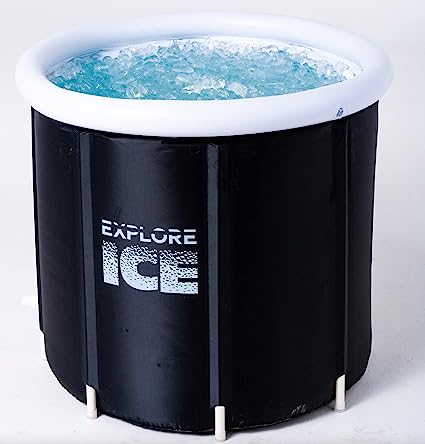When it comes to recovering from an intense workout, athletes have long sought ways to reduce inflammation and soreness. Two popular methods for doing so are taking a cold shower and taking an ice bath. But which one is better? In this article, we’ll explore the benefits and drawbacks of each method to help you decide which one is right for you.
Cold Shower: Benefits and Drawbacks
Taking a cold shower, also known as cold hydrotherapy, involves standing under a showerhead and turning the temperature down to its coldest setting for a few minutes. Here are some of the benefits and drawbacks of this method:
Benefits:
- Reduces inflammation: Cold water can help reduce inflammation by constricting blood vessels and reducing blood flow to the affected area.
- Boosts mood and energy: Cold showers can increase the production of endorphins, which can boost mood and energy levels.
- Improves circulation: Cold water can help improve circulation by causing blood vessels to contract and then dilate, which can improve blood flow throughout the body.
Drawbacks:
- Can be uncomfortable: Standing under a cold shower can be uncomfortable and even painful, especially if you’re not used to it.
- May not be effective for all types of soreness: While cold water can be effective for reducing inflammation, it may not be as effective for all types of soreness, such as muscle strains or sprains.
Ice Bath: Benefits and Drawbacks
Taking an ice bath, also known as cold water immersion, involves filling a tub with cold water and ice and then sitting in it for a specified amount of time. Here are some of the benefits and drawbacks of this method:
Benefits:
- Reduces inflammation: Like a cold shower, an ice bath can help reduce inflammation by constricting blood vessels and reducing blood flow to the affected area.
- Decreases soreness: An ice bath can help reduce soreness by numbing the area and decreasing nerve activity.
- Increases circulation: Similar to a cold shower, an ice bath can help improve circulation by causing blood vessels to contract and then dilate.
Drawbacks:
- Can be uncomfortable: Sitting in an ice bath can be uncomfortable and even painful, especially if the water is too cold.
- May not be practical for everyone: Not everyone has access to a tub or enough ice to fill it.
Which One is Better?
So, which method is better: a cold shower or an ice bath? The answer depends on a few factors.
First, consider the type of soreness you’re experiencing. If you have sore muscles from a tough workout, either method can be effective. However, if you have a muscle strain or sprain, an ice bath may be more effective at reducing inflammation and pain.
Next, consider your personal preference. Some people find cold showers to be invigorating and energizing, while others find them uncomfortable and unpleasant. Similarly, some people find ice baths to be effective and enjoyable, while others find them too cold and uncomfortable.
Finally, consider your access to the necessary equipment. Taking a cold shower requires nothing more than a showerhead and access to cold water. Taking an ice bath, on the other hand, requires a tub and enough ice to fill it. If you don’t have access to a tub or enough ice, a cold shower may be the more practical option.

